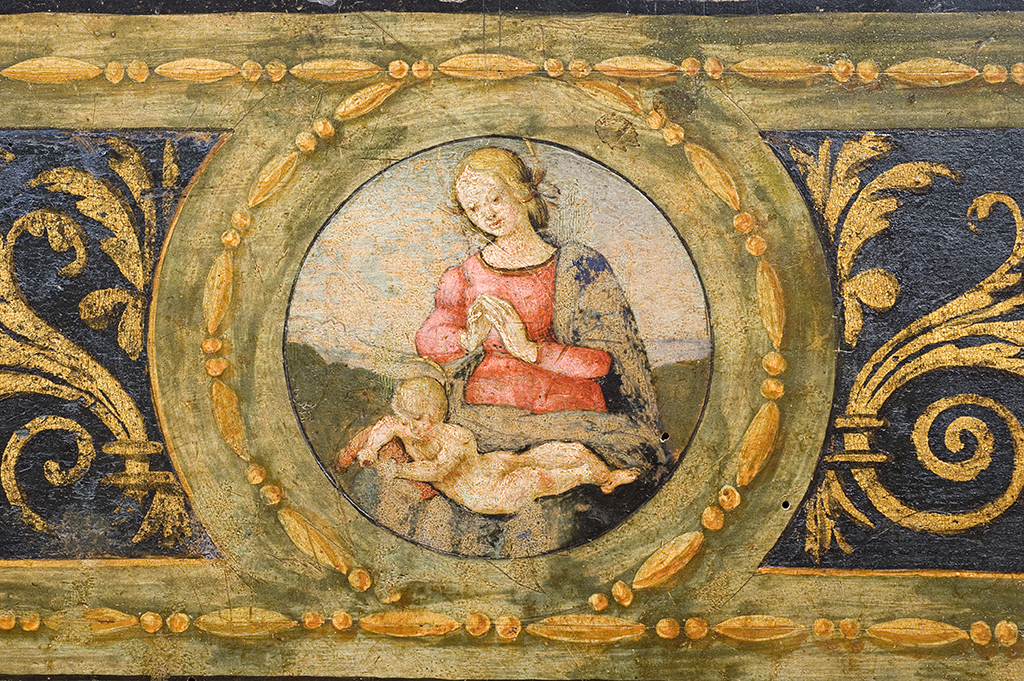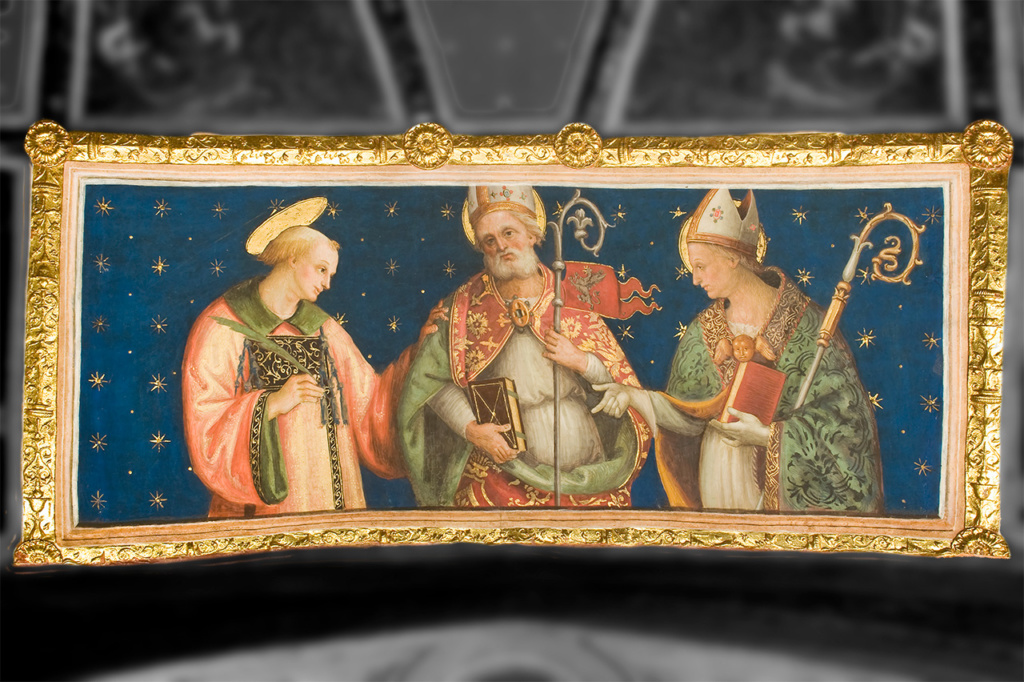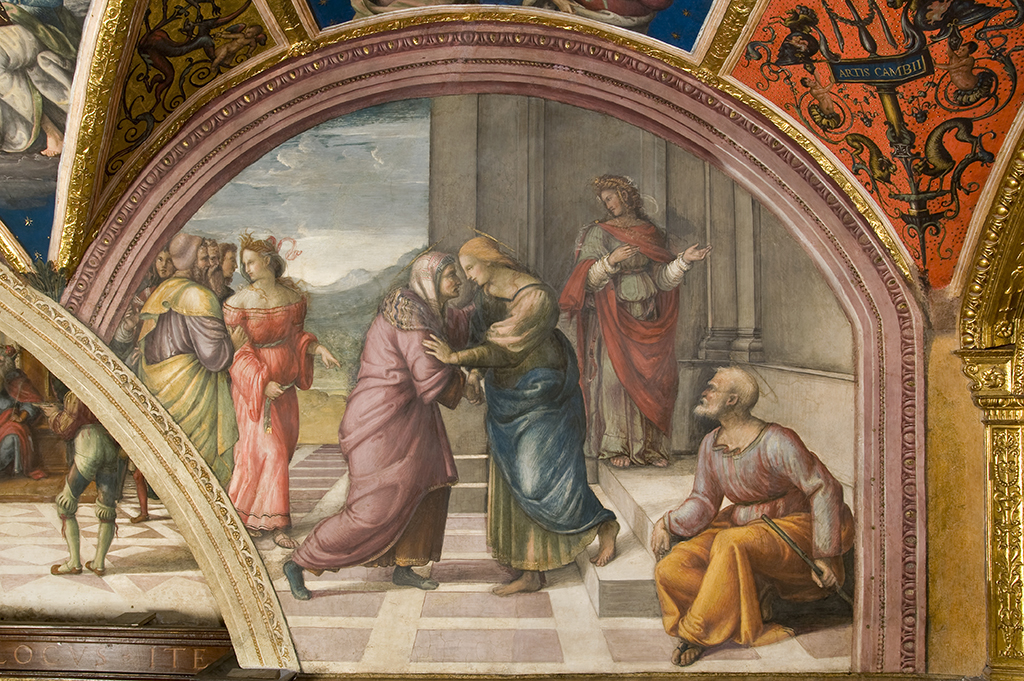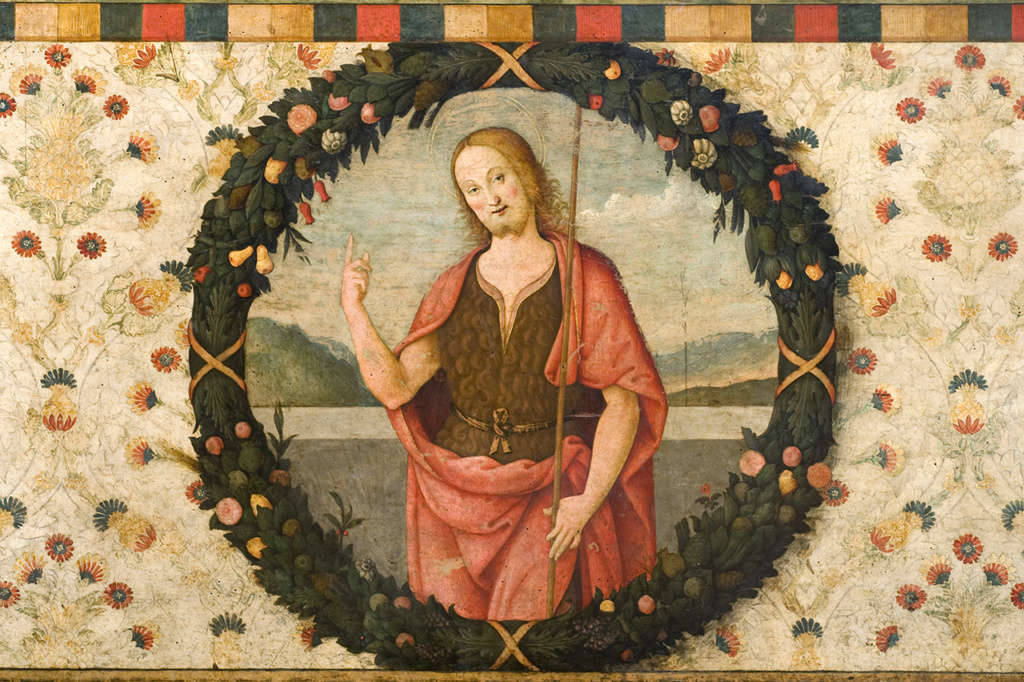The Chapel of St. John the Baptist was built by the Lombard architect Gasperino di Antonio, between 1506 and 1509, on the site of the ancient Church of St. John of the Market (interesting traces of the pre-existing building are visible below the floor).
Internal decoration began with the wooden seats, made in 1508-1509 by Antonio da Mercatello from the Marche, who is also responsible for the wooden shutters of the portals of the Money Changers College.


A few years later (1512), Mariano di Ser Austerio executed the altar frontal. The walls were the last to be decorated (1513). The task was entrusted to Giannicola di Paolo who carried on the work very slowly.
Starting with G. B. Cavalcaselle (1866), all the critics underlined the strong influence of Perugino in the decoration of the vault: the Eternal Blessing is clearly inspired by that of Perugino in the Audience Hall.
The difference in style between the vault and walls can probably be explained by the evolution of the artists’ pictorial language which, starting from a rigid observance of Perugino’s style, gradually detaches itself and leans towards the style of Raphael and to that of Pacchia from Siena and Sodoma and the Tuscan one of Andrea del Sarto.


Finally the high-level altarpiece reflects Luca Signorelli’s attention to art. The lively colouring of the walls, accentuated by the profusion of gold on the altar and vault, seem to contrast the penumbra of the environment that receives light only from the entrance portal.
